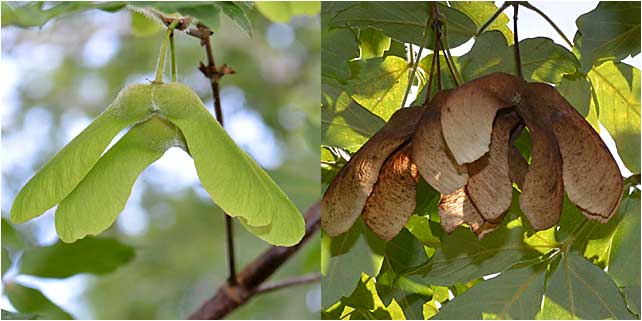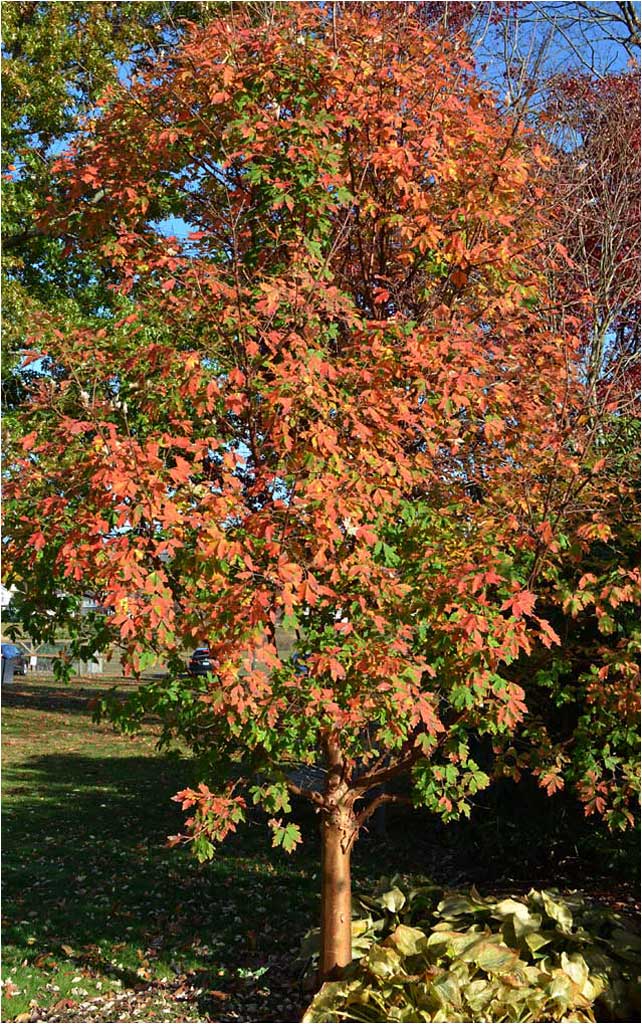14. PAPERBARK MAPLE
Acer griseum

The Paperbark Maple is famous for its paper-like dark red bark. And no better time of the year to see the bark than winter. The tree is native to China, and you may find two at the Arboretum. They are also known as blood-bark maple.
BARK

The bark is undeniably attractive, and this small, deciduous tree was exported to Europe and the U.S. around 1900. Rarely to 30 ft. It is non-native, but not invasive. Arboreta all over the world maintain and study non-native species in very controlled environments.
SPRING, Acer griseum

Spring is a great time for most Maples, and the Paperbark Maple is no exception. Small, inconspicuous flowers arrive early, followed by the leaves. The tree is monecious - male and female flowers on the same tree.
LEAF

The leaves of Paperbark Maple are very unusual for a maple. They are compound leaves (3 leaflets) while most maples have simple leaves. You can clearly see the 3 leaflets in both images, and they lack the sharp points of native maples.
SUMMER

The foliage turns a deeper green during summer, and nestled within the foliage are the "helicopters", or samaras, which are the winged fruit of maples.
SUMMER, SAMARAS

As kids, did you call them helicopters, whirligigs, wingnut, or (England) a spinning jenny? These are the winged fruit of the Paperbark Maple, technically called samaras. The wings help them to spin and fly, and the seeds (one per wing) are at the top. They mature during the summer (green) and drop in the fall.
FALL

Maple trees delight us with their fall color, and the Paperbark Maple is no exception. Several different permutations of orange/red through a short, 3 -4 week period.